|
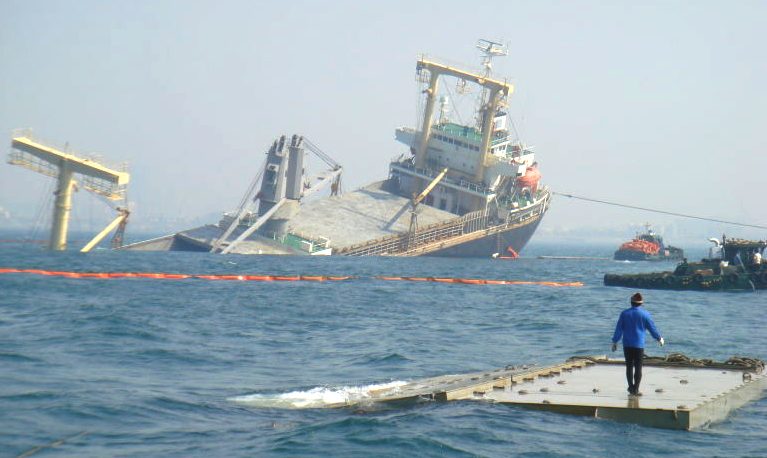
SHIP SALVAGE
Marine salvage is the process of recovering a ship, its cargo, or other property after a shipwreck. Salvage encompasses towing,
re-floating a sunken or grounded vessel, or patching or repairing a ship. Today the protection of the environment from cargoes such as oil or other contaminants is often considered a high priority.
"Salvors" are seamen and engineers who carry out salvage to vessels that are not owned by themselves, and who are not members of the vessel's original crew. When salvaging large ships, they may use cranes, floating dry docks and divers to lift and repair ships for short journeys to safety towed by a tugboat. The aim of the salvage may be to repair the vessel at a harbour or dry dock, or to clear a channel for navigation. Another reason for salvage may be to prevent pollution or damage to the marine environment. Alternatively the vessel or valuable parts of the vessel or its cargo may be recovered for its resale value, or for scrap.
Offshore salvage
The re-floating of ships stranded or sunk in exposed waters is called offshore salvage. In this type of salvage, vessels are exposed to waves, currents and weather and are the most vulnerable and difficult to work on. They also tend to deteriorate more rapidly than such vessels in protected harbors. Offshore salvage may provide only a short window of opportunity for the salvage team due to unusually high tide or inclement weather for instance. The work window may not come around again for as long as weeks or months and in the interim, the vessel will continue to deteriorate. As a result, it is often imperative to work quickly. Typically, offshore salvage is conducted from pre-outfitted salvage tugs and other
tugboats. In addition, portable diving facilities may be transported by
helicopter or small boat to the work area. From a tactical point of view, working in unprotected waters is less hospitable for floating cranes, construction tenders, dredges and equipment barges. Plus, it is often difficult to depend upon a stable workforce (welders, carpenters, etc.) as all personnel must be present on site for the duration.
Harbour salvage
The term harbour salvage refers to the salvage of vessels stranded or sunk in sheltered waters. Such vessels are not normally subject to the same deterioration caused by marine and weather conditions as offshore salvage vessels are. In addition, unless the vessel to be salvaged is obstructing navigation, then there is no need to work as swiftly as in offshore salvage. Also, harbour pre-salvage survey and planning stages tend to be less time consuming and environmentally dependent. It is also easier to gain access to local labour resources and heavy equipment such as floating cranes and barges.
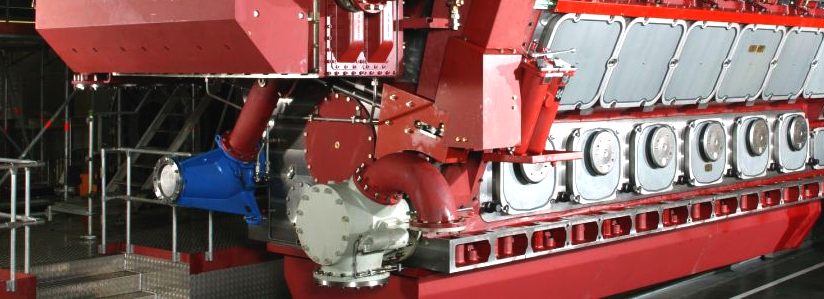
Cargo and equipment salvage
Saving the cargo and equipment aboard a vessel may be of higher priority than saving the vessel itself. The cargo may pose an environmental hazard or may include expensive materials such as machinery or precious metals. In this form of salvage, the main focus is on the rapid removal of goods and may include deliberate dissection, disassembly or destruction of the hull.
Wreck removal
Wreck removal focuses on the removal of hazardous or unsightly wrecks that have little or no salvage value. Because the objectives here are not to save the vessel, the wrecks are usually refloated or removed by the cheapest and most practical method possible. In many cases, hazardous materials must be removed prior to disposing of the wreck. The most common techniques used in wreck removal are cutting the hull into easily handled sections or refloating the vessel and scuttling it in deeper waters.
Afloat salvage
The salvage of a vessel that is damaged but still afloat is called afloat salvage. This type of salvage is mostly unobtrusive and involves primarily damage control work such as hull welding, stabilization (rebalancing ballast tanks and shifting cargo) and structural bracing. In some cases, the vessel can remain underway with little disruption to its original purpose and crew.
Clearance salvage
Clearance salvage is the coordinated removal or salvage of numerous vessels in a harbor or waterway. It typically follows a catastrophic event such as a tsunami, hurricane or an act of war (e.g.
Pearl Harbor). There may be multiple vessel obstructions with varying degrees of damage due to collision, fire or explosions
Contract salvage
In contract salvage the owner of the property and salvor enter into a salvage contract prior to the commencement of salvage operations and the amount that the salvor is paid is determined by the contract. This can be a fixed amount, based on a "time and materials" basis, or any other terms that both parties agree to. The contract may also state that payment is only due if the salvage operation is successful (a.k.a. "No Cure, No Pay"), or that payment is due even if the operation is not successful.
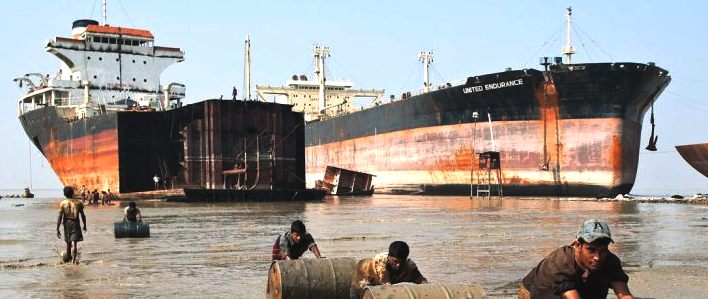
Pure salvage
In pure salvage (also called "merit salvage"), there is no contract between the owner of the goods and the salvor. The relationship is one which is implied by law. The salvor of property under pure salvage must bring his claim for salvage in a court which has jurisdiction, and this will award salvage based upon the "merit" of the service and the value of the salvaged property.
Pure salvage claims are divided into "high-order" and "low-order" salvage. In high-order salvage, the salvor exposes himself and his crew to the risk of injury and loss or damage to his equipment in order to salvage the property that is in peril. Examples of high-order salvage are boarding a sinking ship in heavy weather, boarding a ship which is on fire, raising a ship,
plane, or other sunken property, or towing a ship which is in the surf away from the shore. Low-order salvage occurs where the salvor is exposed to little or no personal risk. Examples of low-order salvage include towing another vessel in calm seas, supplying a vessel with fuel, or pulling a vessel off a sand bar. Salvors performing high order salvage receive substantially greater salvage award than those performing low order salvage.
In order for a claim to be awarded three requirements must be met: The property must be in peril, the services must be rendered voluntarily (no duty to act), and finally the salvage must be successful in whole or in part.
There are several factors that would be considered by a court in establishing the amount of the salvor’s award. Some of these include the difficulty of the operation, the risk involved to the salvor, the value of the property saved, the degree of danger to which the property was exposed, and the potential environmental impacts. It would be a rare case in which the salvage award would be greater than 50 percent of the value of the property salvaged. More commonly, salvage awards amount to 10 percent to 25 percent of the value of the property.
Private boat owners, to protect themselves from salvage laws in the event of a rescue, would be wise to clarify with their rescuer if the operation is to be considered salvage, or simply assistance towing. If this is not done, the boat owner may be shocked to discover that the rescuer may be eligible for a substantial salvage award, and a lien may be placed on the vessel if it is not paid.
Naval salvage
Several navies have Rescue Salvage vessels which are to support their fleet and to come to the aid of vessels in distress. In addition they may have Deep Salvage Units. A DSU (salvage) is an attached unit to the US Navy Submarine Rescue
Unit. Technical diving marine salvage units which can operate in depths unworkable by civilian divers, and which requires saturation diving or trimix (breathing gas) diving techniques. This type of Unit is at times formed by a commercial diving company contracting to government via the Baltic Exchange.
Plunder
When certain vessels are lost in an unknown area, a potential salvor might discover and plunder the wreck without knowledge of the wreck's owner. Such a "finder's, keepers" salvage operation was conducted at the height of the Cold War when the United States raised a portion of Soviet submarine K-129 in the Western Pacific Ocean. The CIA, who conducted the salvage under the guise of "mining the seafloor for manganese nodules" with a commercial vessel, spent over $800 million (1974
Dollars) on the clandestine operation now known as Project Azorian. Salvaging a foreign navy's vessel is against international law.
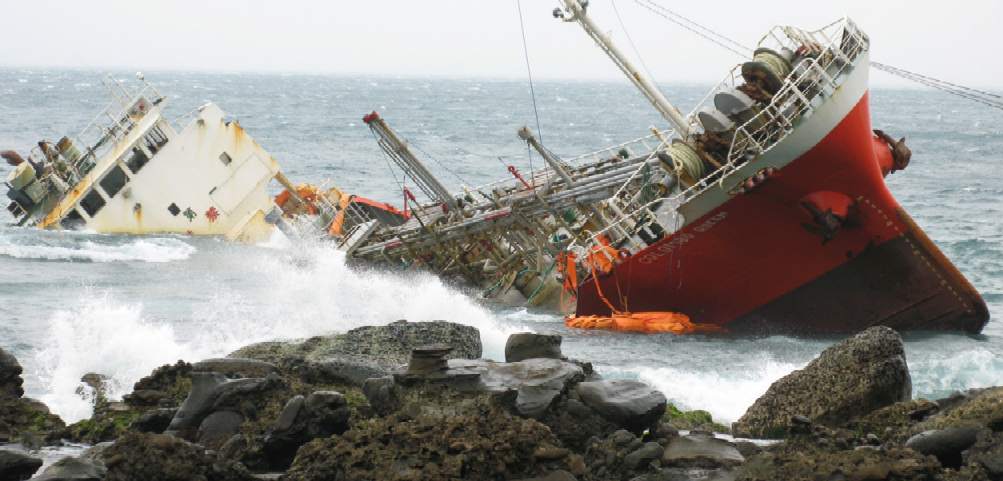
SALVAGE LAW
Salvage law has as a basis that a salvor should be rewarded for risking his life and property to rescue the property of another from peril. Salvage law is in some ways similar to the wartime law of prize, the capture, condemnation and sale of a vessel and its cargo as a spoil of war, insofar as both compensate the salvor/captors for risking life and property. The two areas of law may dovetail. For instance, a vessel taken as a prize, then recaptured by friendly forces on its way to the prize adjudication, is not deemed a prize of the rescuers (title merely reverts to the original owner). But the rescuing vessel is entitled to a claim for salvage. Likewise a vessel found badly damaged, abandoned and adrift after enemy fire disabled her does not become a prize of a rescuing friendly vessel, but the rescuers may claim salvage.
A vessel is considered in peril if it is in danger or could become in danger. Examples of a vessel in peril are when it is aground or in danger of going aground. Prior to a salvage attempt the salvor receives permission from the owner or the master to assist the vessel. If the vessel is abandoned no permission is needed.
The amount of the award depends on, in part, the value of the salved vessel, the degree of risk involved and the degree of peril the vessel was in. Legal disputes do arise from the claiming of salvage rights. To reduce the amount of a claim after an accident, boat owners or skippers often remain on board and in command of the vessel; they do everything possible to minimise further loss and seek to minimize the degree of risk the vessel is in. If another vessel offers a tow and the master or owner negotiates an hourly rate before accepting then salvage does not apply.
Some maritime rescue organisations, such as Britain's Royal National Lifeboat Institution, insist the crews of their lifeboats renounce their right to claim compensation for salvage.
Jetsam are goods that were thrown off a ship, which was in danger, to save the ship. Flotsam are goods that floated off the ship while it was in danger or when it sank. Ligan or lagan are goods left in the sea on the wreck or tied to a buoy so that they can be recovered later by the owners. Derelict is abandoned vessels or cargo.
In the United Kingdom under the Merchant Shipping Act 1995, jetsam, flotsam, lagan and all other cargo and wreckage remain the property of their original owners. Anyone, including recreational divers and beachcombers, removing those goods must inform the Receiver of Wreck to avoid the accusation of theft. As the leisure activity of wreck diving is common, there are laws to protect historic wrecks of archaeological importance and the Protection of Military Remains Act 1986 protects ships and aircraft that are the last resting place of the remains of members of the armed forces.
The 1910 Brussels Convention for the Unification of Certain Rules with Respect to Assistance and Salvage at Sea reflects the traditional legal principles of marine salvage. The 1989 International Convention on Salvage incorporated the essential provisions of the 1910 Convention, and added some new provisions besides. The 1989 Salvage Convention entered force on 14 July 1996 with nearly twenty parties in agreement. For states which are parties to both conventions, the 1989 Convention takes precedence over the 1910 one where their provisions are mutually incompatible.
NOTABLE SALVAGES
The largest marine salvage operation on record was the raising of the German High Seas Fleet which was scuttled at Scapa Flow in 1919. Between 1922 and 1939, 45 of the 52 warships sunk, including six battleships, five battlecruisers, five cruisers and 32 destroyers were raised from the bottom of the flow at depths of up to 45 metres, primarily by Cox & Danks Ltd & Metal Industries Ltd, and broken up for scrap.
The harbor clearance and ship recovery after the attack on Pearl Harbor. The USS California and USS West Virginia resting on the bottom of Pearl Harbor 7 December, 1941, were re-floated and repaired. They were key participants in the Battle of Surigao Strait in October 1944.
The Swedish 17th-century warship Vasa was raised in April 1961. She had lain on the bottom of Stockholm harbor since her capsizing on her maiden voyage in 1628.
The raising and subsequent conservation of the Mary Rose, the flagship of the navy of King Henry VIII, which sank in 1545 in the Solent, North of the
Isle of
Wight. As with the Vasa, the salvage of the Mary Rose in 1982 was an operation of immense complexity and was a major achievement in marine archaeology. The remains of the ship, together with recovered weapons, sailing equipment and crew’s personal effects are now on display at Portsmouth Historic Dockyard and the nearby
Mary Rose Museum.
In 1943-44 a famous Great Lakes salvage engineer, Capt. John Roen, did what was considered financially impossible and salvaged the S.S. Humphrey which in sank in a collision in 77 foot deep water in the Mackinaw Straits, by first removing the ore it was carrying and then using two vessels on each side of the underwater wreck, with cables that "walked" the Humphrey in stages under water (reducing the weight drastically) to shallower water where it was then pumped out and re-floated and towed out. Some of the techniques developed by Roen for the Humphrey salvage established methods which became new standards for future salvages, where before many wrecks were considered too heavy and large to salvage.
In 1974 the U.S. CIA attempted to recover the sunken Soviet Golf class submarine K-129 in the secret and expensive intelligence operation Project Azorian. The attempt was only partially successful.
Nuestra Señora de Atocha was discovered in 1985 with recovered gold and other artifacts worth an estimated $400 million USD.
Vrouw Maria was discovered in 1999, and after a protracted legal battle, plans for salvage are still in the discussion and planning stage[citation needed]. It is known to contain priceless works of art.
The search for the wreckage and flight data recorders of South African Airways Flight 295 is at 16,000 feet (4,900 m) the deepest successful marine salvage operation to date.
On 12 August 2000, the Russian Oscar class submarine Kursk sank in the Barents Sea following an internal explosion, leading to the death of 118 sailors and officers. The badly damaged submarine was salvaged in late 2001 to recover the bodies and eliminate the hazard from the Kursk's two nuclear reactors.
The USS Cole (DDG-67) was severely damaged in October 2000 by terrorists while it was harboured in the Yemeni port of Aden. It was rescued, salvaged, and repaired to serve again.
In July 2002, HMS Nottingham (D91) suffered serious damage in poor weather, striking Wolf Rock near Lord Howe Island. She was towed, stern first to Newcastle, New South Wales in August 2002 for minor repairs and was consequently returned to the United Kingdom aboard the heavy lifting vessel MV Swan.
In July 2006, the Japanese car carrier the Cougar Ace, packed with 4,700 Mazda cars and Isuzu trucks bound for the North-American market was traveling from Japan to Vancouver, British Columbia, when it stranded in the Pacific Ocean. The ship’s condition quickly began to deteriorate as it took on water. The salvage team involved had to work solidly for 24 days straight to try and save the vessel and its extremely lucrative cargo.
In May 2007, Odyssey Marine Exploration undertook the Black Swan Project and recovered an estimated $500 million USD in silver and gold coins from a ship wreck in the Atlantic Ocean. However, the wreck and its contents are claimed by the
Spanish government, and this is an ongoing legal dispute within
United States Federal Courts
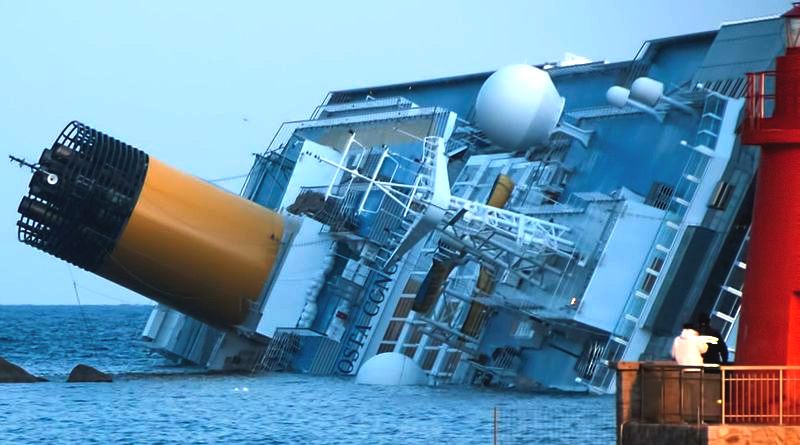
COSTA CONCORDIA
It is twice as heavy as the Titanic, and lies impaled on two giant outcrops of undersea granite with a 160 foot gash in its hull.
But despite posing one of the toughest marine salvage challenges in modern history, the stricken Italian cruise liner,
Concordia, is now being exhumed from its watery shallow grave.
The 950-ft vessel ran aground off the picturesque Tuscan island of Giglio one night last January, leaving 32 people dead and its captain facing manslaughter charges.
However, the quicker, cheaper option of dismembering the vessel on the spot was ruled out because of fears that it would allow a soup of debris to escape into Tuscany's coastal waters, including the personal effects of Concordia's 4,200 passengers and crew.
Instead, a 450-strong team of the world's best salvage technicians, including 70 Britons, are now embarking on an ambitious project to prise the ship from its half-submerged resting place and refloat it, so that it can be towed to a shipyard for demolition.
For Captain Michael Walker, a tug boat commander from the Orkney Islands, the operation in the calm, sun-kissed waters of the Tyrrhenian Sea is a welcome change from the stormy North Sea, where he and his colleagues service off-shore windfarms.
Yet with such an unprecedented exercise even he is not confident of
success, because of the scale of the challange; the Concordia is the largest ever passenger shipwreck by tonnage in
history. "If it goes well, we'll be telling everyone about it," said Capt Walker, 27. "But it's never been done before and nobody really knows whether it will work or not. I hope it does."
Leaning out over the deck railings of his tug boat, Capt Walker told how he struggled to even comprehend the scale of the task ahead of him when he first saw the huge, gleaming white vessel lying on its side.
"It was a surreal sight," he said. "After arriving on the island it took me a few days to take it in."
The Concordia, which was at the start of a week-long cruise of the Mediterranean, ran aground after its captain, Francesco Schettino, allegedly attempted a "sail-past" of Giglio's port, taking him too close to the shore. It rapidly took on water after being holed, and then keeled over on the island's shallow shores.
A panic-stricken evacuation in darkness ensued, with terrified passengers and crew inching down the steeply-slanting hull while others leapt into the sea.
The captain has been accused of abandoning ship before the chaotic evacuation was over, although he claims to have accidentally "tripped" into a
lifeboat which then took him to shore.
He appeared earlier this month at a pre-trial hearing in Tuscan city of Grosseto, where he faces accusations of manslaughter, abandoning ship and causing a
shipwreck.
The size of a large block of flats, the 114,500-ton Concordia is twice as heavy as the Titanic. Everything about the operation to rescue it is on an epic scale, and the task of lifting the stricken ship off the seabed, hauling it upright and towing it away for demolition is expected to cost at least £250 million.
Specialists from a dozen countries are involved, but the UK is playing a prominent role. There are drilling crews from Cornwall, Welsh engineers and a contingent from Orkney and the Shetlands. Also with them are 30 crewmen from the Pioneer, a large construction support vessel from
Middlesbrough.
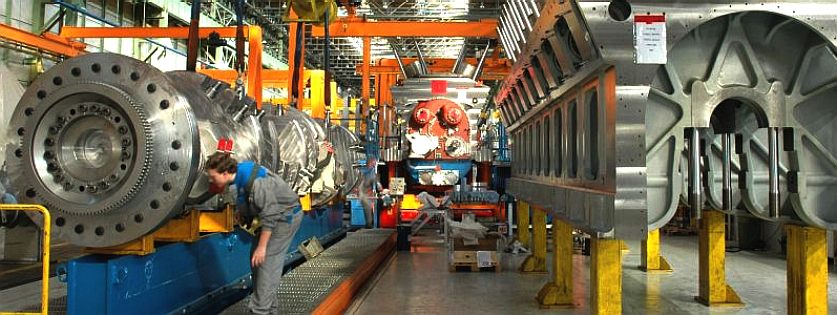
The Voe Earl has been helping to position a series of giant anchors, some of which can weigh 10 tons and measure 17ft, for the pontoon platforms which are working around the Concordia. The ship has been stabilised with 16 high-strength cables wrapped around its underbelly, which are weighted down by giant 12 anchor blocks weighting 35 ton each.
Now the salvage teams will beging working on the even more challenging task of trying to tilt the ship back upright. Over dinner in a seaside restaurant one night, Capt Peter Bouchard, a British master mariner, demonstrated this process by laying a wine bottle horizontal on the table in front of him and rolling it a one-sixth turn. But while the principle is simple, the reality is rather harder.
To start with, the salvage teams are drilling 26 holes in the granite seabed in which to place 6ft-wide pillars, which will support six specially-designed support platforms covering an area the size of a rugby pitch. This will create an area on to which the ship can be rolled without it fracturing its own own weight.
For additional support, gaps between the platforms will be filled with sacks holding nearly 18,000 ton of cement.
Access to the gaps is so awkward that the sacks will have to be filled by hand by a team of 100 divers. Assisted by seven
underwater
robots, they will manhandle hoses that will disgorge slurry cement into the bags. The ship will then be refloated with the aid of 15 enormous steel tanks which will be bolted onto its seaward-facing side, effectively acting as giant "arm bands".
"The biggest are 32 metres long, which is the height of an 11-storey building," said Capt Nick Sloane, the South African senior salvage master in overall charge of the recovery effort. "They weigh 500 tons and to get them lined up exactly so that we can weld them on is no small feat."
The sheer toughness of the granite seabed, he added, was making the drilling task even harder.
Once the tanks are bolted to the ship, they will then be attached to by cable to the support platform. The cables will then be slowly
tightened, while the tanks will be gradually filled with sea water, helping to drag the liner into an
upright
position. When it is upright, another 15 tanks will then be welded to the landward side of the ship.
The seawater will then be pumped back out of the tanks, turning them from ballast to buoyancy aids and floating the ship free of the underwater platform.
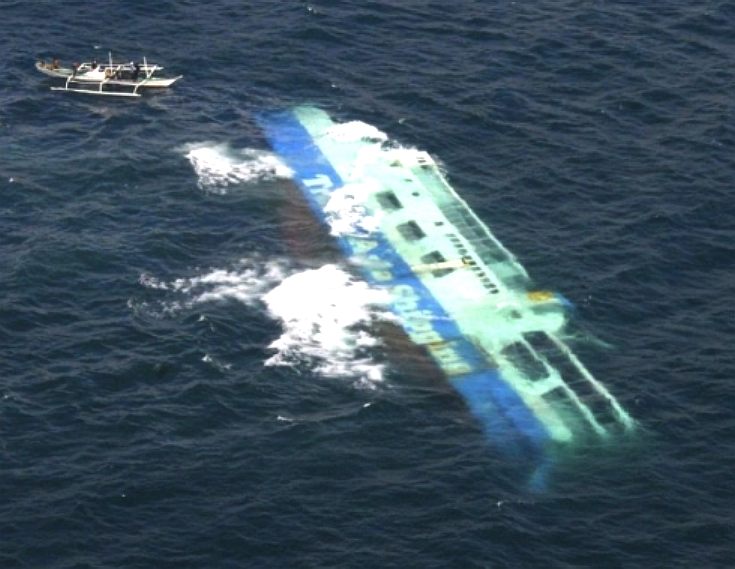
The divers will work in shifts around the clock, eating and sleeping on board the Pioneer, which serves British food, including kippers, Cornish pasties, and black pudding. If divers get into trouble underwater, there will be 10 decompression chambers on hand.
"This operation is pushing the boundaries of marine technology," said Capt Bouchard, who was recruited from Georgetown, Guyana, where he normally lives. "There is no other job this size in the world."
The Concordia will be taken to an as yet unspecified Italian port, where it will probably be demolished for scrap metal. The big fear is that the ship could break up before it can be floated away - a nightmare scenario that salvage experts insist will not happen.
The removal operation is being conducted jointly by Titan, an American salvage firm, and Micoperi, an Italian offshore rig company, which were commissioned to do the job by Costa Cruises, the Italian owners of the Concordia.
The removal of oil and diesel from the ship's fuel tanks earlier this year assuaged fears of an environmental disaster in the sea around Giglio, which lies in a marine conservation area populated by whales and dolphins.
Still, experts are going to unusual lengths to protect marine life around the ship. The huge shadow cast by the Concordia has killed a large swathe of sea grass beneath it, putting about 200 giant clams at risk, so marine biologists relocated them to further down the coast. When drilling starts, two underwater tubes pump also compressed air into the water, creating a "a wall of bubbles" that prevents the noise disturbing the whales and dolphins.
As the recovery operation is stepped up, many of those involved cannot help wondering how the accident could have happened in the first place.
"With a ship of that size, you'd start to get nervous if you were within a couple of nautical miles of the island," said Ewan Anderson, another Shetlands salvager. "For him to get so close... I just can't comprehend what he was thinking."
BALTIC
ACE
As
yet this ship and cargo remain to be salvaged.
ENGINE
SPARES & SCRAPPING
Burak Marine is a leading Turkish company, trading for 10 years in the field of Marine Engines and Spare Parts
for ships. They have contacts with most big Engine manufacturers in Turkey,
of which there are about 20.
They
have worked in Eastern Europe and North America; Bulgaria, Greece, England, Romania, Canada, İndia,
China, Arap Peninsula, Bangladesh, and Dubai more specifically.
Burak Marine is committed to reliability, total quality and unconditional customer service.
Their connections with Turkish Marine Engine manufacturers ensures that
customers receive the best terms.
They
stock many Spare Parts such as: generating sets (Genset), marine diesel engines, gearboxes, turbochargers,
all kinds of new piston ring sets, gasget, rubber oil seal and o-ring parts.
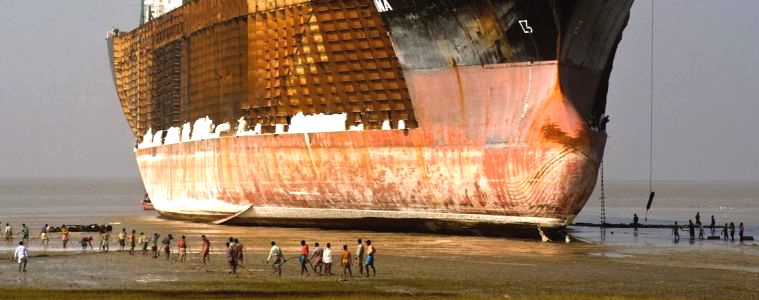
CONTACT
PERSON :MR.BURAK ALDEMİR
PHONE & FAX: 0090
0216 545 55 27
Mobile: 0090
0532 698 66 21 ( 24 HOURS )
SKYPE:
burak.aldemir
MARINE ENTERPRISE
SHIP MACHINERIES & SPARES
Marine Enterprise is a firm set up mainly for exporting ship machinery and spares procured from scrapped ships at India's largest Ship Breaking Yard
ALANG.
They are looking for new outlets for their stock which typically
includes:
AIR COMPRESSOR
AUX.ENGINE AND SPARES
MAIN ENGINE AND SPARES
TURBOCHARGERS
PURIFIER
SEWAGE TREATMENT PLANT
GOVERNOR
HYDRAULIC PUMPS AND MOTOR
They will be pleased to quote on hearing about your requirements/specifications.
CONTACTS:
Shrenik Mehta
Marketing Executive
For, Marine Enterprise
Bhavnagar
INDIA
Tel.: +91-278-2429591
Mobile: +91-97 23298676
Email Id: marine@marine-enterprise.com
Website: www.marine-enterprise.com
LINKS:
http://www.asian-marine.com.tw/index.php?option=news2&cid=4&nid=29
http://www.burakmarine.com/default.asp

The
Solar Navigator - SWASSH (Small Waterplane Area Stabilized Single Hull)
test model 2012
The
latest Solarnavigator is designed to be capable of an autonomous
world navigation set for an attempt
in
2015 if all goes according to schedule.
|








